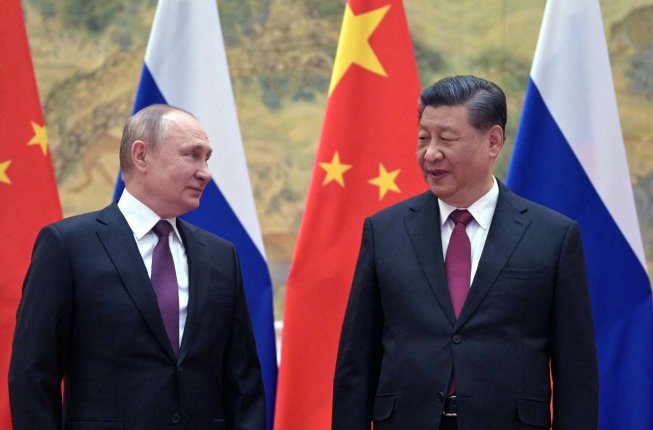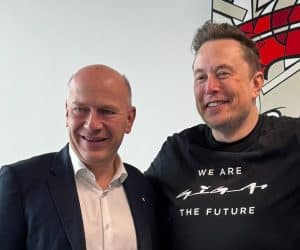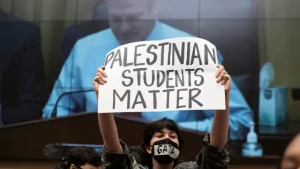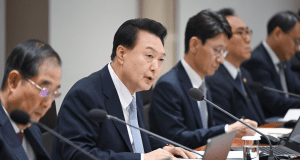Chinese president Xi Jinping has just completed his first visit to Moscow since the Russian invasion of Ukraine a year ago. This visit, which involved almost three full days of talks with Russian president Vladimir Putin, comes at a pivotal moment in the war. Both Russia and Ukraine are looking for funds and equipment to restart their war machine. A de facto war has transformed into a war of attrition, with neither side managing to gain ground despite the latest advances of the Russian paramilitary group, Wagner, in Bakhmut.
A Visit amid the Specter of War in Ukraine
For some weeks, Beijing has been strengthening its interference in the Ukrainian conflict, trying to create an image of a privileged diplomatic interlocutor for the Russian side, in the face of the United States, which is fully committed to the Ukrainian side and is doing everything to prolong the war indefinitely. After its successful diplomatic coup in restoring relations between Iran and Saudi Arabia,1On March 10, 2023, in a deal brokered by China and after seven years of severed ties, Iran and Saudi Arabia reached an agreement to reestablish diplomatic relations and reopen embassies. The joint statement released by Iran, Saudi Arabia, and China further stated, “The agreement includes their affirmation of the respect for the sovereignty of states and the non-interference in internal affairs.” China would like to do the same in the Russian-Ukrainian conflict. In many ways, China has several advantages. It has important commercial relations with not only Russia but also western Europe, which constitutes a major diplomatic lever. But it faces hostility from NATO allies who see it as too close to the Kremlin and, in the long term, as a competitor in the U.S.-dominated world order.
Beijing outlined a proposed peace plan on February 24, but many analysts perceive it as too vague and unworkable. Nonetheless, both sides were open to the proposals, which was a slap in the face to Western diplomacy. President Volodymyr Zelenskyy has shown interest in a diplomatic resolution from China, but the refusal to mention a withdrawal of Russian troops from Ukraine (including the Donbas) in this peace plan means that, in the final analysis, it will remain null and void. In reality, Xi’s proposed plan is mainly an attack on U.S. hegemony and its “Cold War mentality.”
For Putin, the stakes of the visit are twofold. First, he needs to break Russia’s isolation, but also his own. Only a few days ago, the International Criminal Court issued an arrest warrant against him, meaning that the signatories of the Rome Treaty are obliged to arrest him if he travels to any of the 123 member countries. Ironically, the United States could not arrest him under the terms of the treaty, since it has always refused to ratify it — after the law was enacted in 2002, the U.S. even authorized the invasion of the Netherlands, where the ICC is located, if a U.S. citizen is detained in The Hague.
Second, Putin urgently needs arms and equipment. But Chinese arms shipments to Russia, which the United States believes are imminent, may not take place — at least through traditional channels. China’s position of so-called neutrality in this conflict is important diplomatic leverage. Putin has little to hope for on this front. According to some analysts, Xi would rather extract meager concessions from Putin on the Ukrainian front, and thus strengthen his role as mediator between the two warring parties.
Strengthening Bilateral Trade Relations and a Geopolitical Alliance
The “boundless friendship” between Russia and China, as presented in a statement made during Putin’s visit to Beijing a few weeks before the start of the Russian invasion, soon found its limits, as Beijing still refused to officially support the “special operation” in Ukraine and bowed to Western sanctions. Nevertheless, the pseudo-alliance of circumstance has generally held up, contrary to the hopes of some U.S. analysts: the loss of earnings caused by the sanctions against Russia has been partly made up for by an explosion in economic relations between the two countries. China, for example, has become the leading importer of Russian oil, taking the place previously occupied by Germany. In addition, Chinese exports have also greatly increased, especially of semiconductors, via indirect routes. These chips are of vital importance to Russia, since it uses them for its armaments.
Moscow has thus found in China a commercial partner to compensate for Western sanctions and to maintain its war machine. For its part, Beijing is more than happy to buy Russian oil at reduced prices. This is the main objective of Xi’s visit to Moscow. Beyond the real desire to present himself as a peacemaker in Ukraine, the central goal for Xi’s visit is to strengthen bilateral economic cooperation between the two countries. China needs oil in large quantities, and the circuit of oil from Saudi Arabia (its main supplier) and liquefied natural gas from Qatar is long and full of pitfalls: the Straits of Hormuz and Bab-el-Mandeb, the Strait of Malacca, and finally, the South China Sea.
The presence of the world’s largest hydrocarbon basin, in western Siberia, is pushing China to revise its transportation routes and detach itself from the China Sea, which is surrounded by the United States’ allies. To this end, one of the main points that should be broadly discussed is the launch of a new gas pipeline, the Power of Siberia II, which will bring gas from Siberia in a direct line to China, crossing Mongolia. This point of discussion is of primary importance for China, and important for Russia as well, but it is seldom explored in the mainstream media, which maintains its focus on the Ukrainian question.
In many ways, the meeting between Putin and Xi is more important for the latter: China is being undermined by existing and upcoming trade embargoes, and is thus looking for new partners. The task is difficult, however, since most Chinese companies prefer to deal with Europe. Finding opportunities in Russia is proving complicated; for the moment, the evolution of trade relations has been limited to the hydrocarbon and semiconductor markets. The two heads of state have every interest in diversifying imports and exports between the two countries.
While they present themselves as lifelong friends, the “alliance” between Xi and Putin, and between China and Russia, is an alliance of circumstance rather than an organic closeness. Russia vitally needs China’s support, albeit relative, in its conflict, be it political, financial, or military. Concurrently, China is seeking to reduce its commercial dependence on an increasingly hostile West and on the countries of the Gulf, whose exports are conditional, based on the control of the straits that separate them, particularly the Strait of Malacca, a “hot spot of world security.” Furthermore, China is seeking to create a position as a privileged interlocutor in the conflicts that cross the world, particularly with the BRICS and the “Global South.” The next step for Xi Jinping could thus be a discussion in the coming days with Zelenskyy, a first since the beginning of the war.
The reactionary and hostile policy of the Western imperialist powers, starting with the United States, has pushed China and Russia closer together. And even if this rapprochement seems based on establishing a defensive position for both countries, it is not a minor detail. On the contrary, it is an important event for international relations and competition between states. Yet China and Russia’s opposition to the policies of the Western imperialists does not make them “anti-imperialist” powers. Indeed, Moscow and Beijing are seeking their own ways to impose the interests of their capitalist classes on the international scene, and therefore they are deeply reactionary and anti-worker powers. The workers’ and revolutionary movement does not have to choose between these two reactionary “blocs” but must instead seek to create an independent class alternative within the framework of these international frictions and tensions.
This article originally appeared in French on March 21, 2023 on Révolution Permanente.
Notes
| ↑1 | On March 10, 2023, in a deal brokered by China and after seven years of severed ties, Iran and Saudi Arabia reached an agreement to reestablish diplomatic relations and reopen embassies. The joint statement released by Iran, Saudi Arabia, and China further stated, “The agreement includes their affirmation of the respect for the sovereignty of states and the non-interference in internal affairs.” |
|---|










